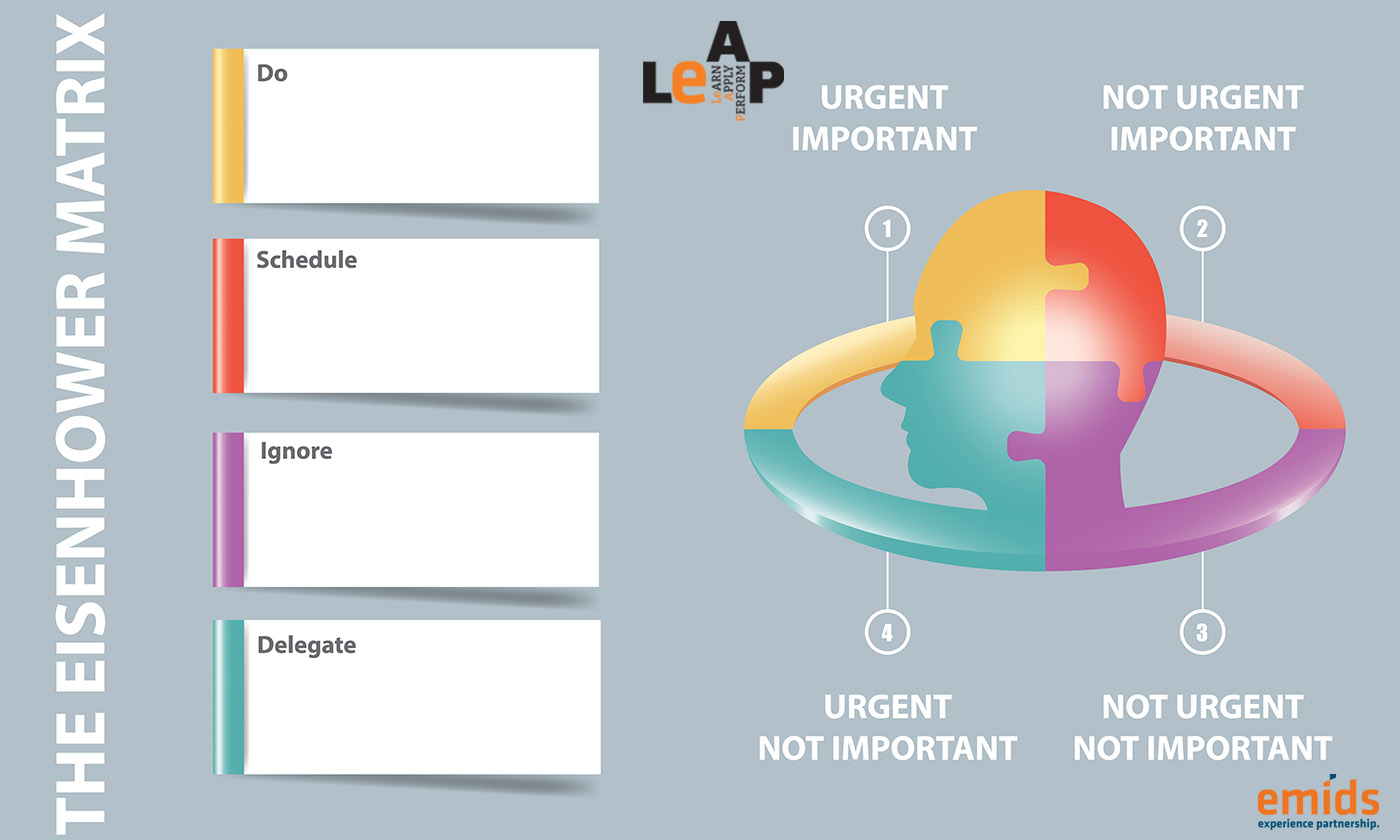Most employees, if reports are to be believed, waste 21.8hours of their work week. Dwight D. Eisenhower wasn’t one of them. As the 34thPresident of the United States, Supreme Commander of the Allied Forces in Europe during World War II, and then Supreme Commander of NATO as well, Eisenhower was not just a busy man, but also a highly productive man. And one of his productivity strategies is now called the Eisenhower box.
The Eisenhower box is a simple matrix that helps you organize your tasks and strategize on when and how to complete them. All tasks are divided into four categories on the basis of importance and urgency.
Urgent tasks are those that need to be done immediately, including picking up a phone call or replying to an urgent customer request. Important things are critical to your long-term success, like creating a roadmap for a new project or spending time on personal improvement activities like exercise and meditation.

Quadrant 1: Urgent and important tasks
Tasks that fall in this quadrant need to be accomplished immediately. These could include filing your taxes on the day before the deadline or resolving sudden disputes at office. However, these tasks could be planned better so that they move to quadrant two. For example, resolving a sudden dispute at work is urgent and essential, but also avoidable if processes are put in place to enable even colleagues with varying viewpoints to communicate without escalating tensions.
Quadrant 2: Important but not urgent tasks
Most of the important — and predictable — tasks at work fall into this category. Recording your research findings, planning your monthly targets, attending a training — all of these can be important, and require you to schedule them into your calendar. You may wonder, why not just get started on them, instead of scheduling for later? That’s because you’d rather focus on them when you have some distraction-free time. Look at the routines of famous achievers like Benjamin Franklin, Franz Kafka, or Haruki Murakami. You’ll notice that their most productive hours were either late at night or early in the morning — less distractions, more efficiency.
Quadrant 3: Urgent but not important
The colleague who needs help with drafting an email, the buzzing phone, the boss who asks you for a data point, might often seem urgent and important, but on closer scrutiny, you’ll realize that they are probably important and urgent to someone else, not you. In fact, you might be interrupting an important task to answer that call or find that data point. Delegate, delay, or find a workaround for such tasks. For example, ask the colleague to wait till you are finished with your work, let the phone call go to voicemail, and store all data points where they are easily accessible to the boss.
Quadrant 4: Neither urgent nor important
The coffee break, sorting through junk mail, or checking social media — all these activities are neither urgent nor important, and yet need to be slotted into the day. Keep them at a minimum, so that you have more time for activities in the first two quadrants.
There are many apps available to help you organize your tasks using this matrix, but a simple pen-and-paper would do just as well. What’s important is to stay disciplined and practice this, so you get better at sorting out your tasks and spend most of your time on those in the second quadrant. Good luck with it.







